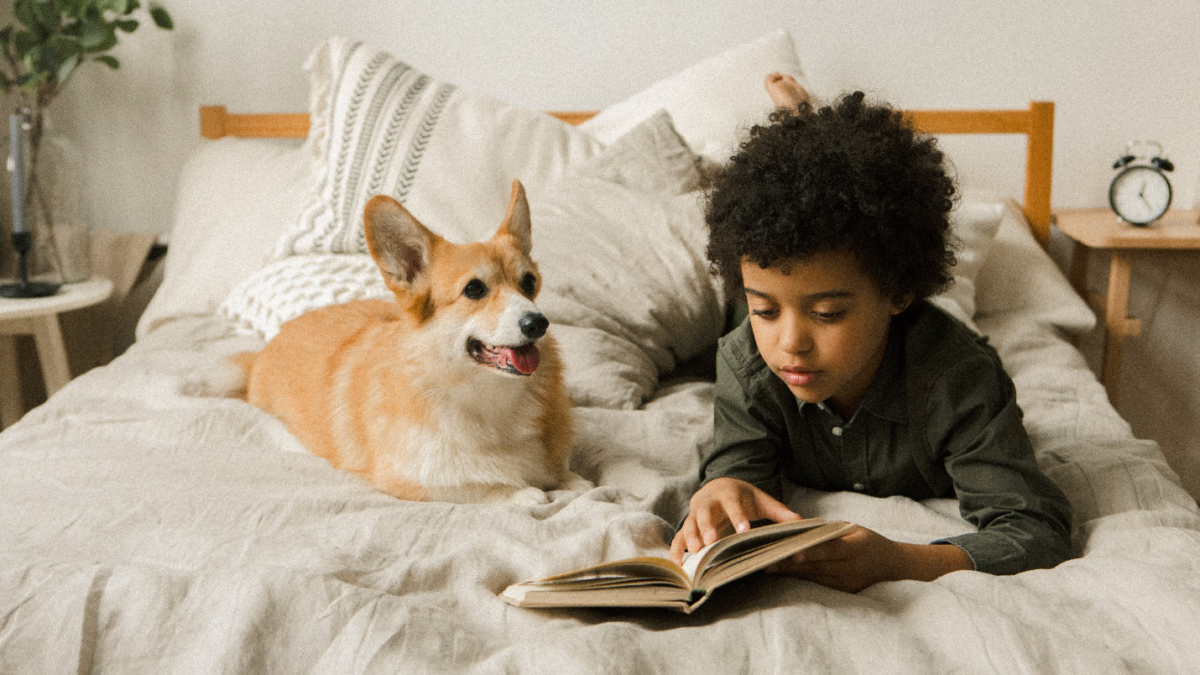Welcoming a new family pet requires thoughtful planning and consideration. The dynamics change when kids are involved, making the introduction process even more crucial for a peaceful family life. This parenting blog will guide you through the dos and don’ts of introducing a pet to your family with kids.
Dos
Choose a Kid-Friendly Pet
Choose a pet known for its compatibility with children. Research breeds or species that are known to be gentle, patient, and good with kids. This initial selection sets the stage for a positive and safe interaction between your new pet and your children.
Educate Kids about Pet Care
Before bringing a new pet home, educate your children about responsible pet care. Teach them about feeding schedules, the importance of playtime, and the significance of gentle handling. An informed and engaged family is better equipped to create a loving and nurturing environment for the new addition.
Supervise Interactions Closely
Always supervise interactions between your new family pet and young children. Even the most well-behaved pets may need time to adjust to the unpredictable nature of kids. Close supervision ensures the safety of both parties and allows for positive bonding experiences.
Involve Kids in Pet Care Responsibilities
Include your children in age-appropriate pet care responsibilities. This involvement not only teaches them about responsibility but also strengthens the bond between your kids and the new pets. Simple tasks like feeding, brushing, and playtime create positive associations.

Establish a Kid-Friendly Pet Zone
Designate a specific area in your home as a kid-friendly pet zone. This space allows your new pet to have a retreat when needed, providing a sense of security. Teach your children to respect this space and understand when the pet requires some alone time.
Encourage Gentle Play
Teach your kids the importance of gentle play with their new pets. Discourage roughhousing or behaviors that may stress the pet. By promoting gentle play, you create a positive environment for bonding and reduce the risk of accidents.
Don’ts
Ignore Pet Body Language
Pay close attention to your new pet’s body language, especially when interacting with children. Ignoring signs of stress or discomfort can lead to misunderstandings and potential issues. Teach your kids to recognize when the pet needs space and when it’s open to interaction.
Skip the Introduction Phase
Avoid rushing the introduction phase between your new family pet and your kids. Give both parties time to acclimate to each other gradually. Skipping this crucial step can lead to fear and anxiety for the pet, hindering the development of a positive relationship.
Neglect Training and Boundaries
Training is essential, especially when kids are involved. Neglecting training and boundaries can lead to misunderstandings and potential conflicts. Establish clear rules for both your pet and your children, emphasizing the importance of respect and kindness.
Overwhelm with Noise and Activity
Pets, especially those not accustomed to children, may find excessive noise and activity overwhelming. Create a calm and controlled environment during the initial days to help your new pet adjust. Gradually introduce more activity as the pet becomes more comfortable.

Disregard Allergies and Sensitivities
Be mindful of potential allergies or sensitivities within your family. Allergies can develop unexpectedly, and it’s crucial to address them promptly. Disregarding allergies can lead to health issues for both your children and the new pet.
Assume Instant Bonding
While we hope for an instant bond, it’s essential not to assume that it will happen immediately. Building a strong connection takes time, so be patient and allow your children and the pet the opportunity to develop a relationship at their own pace.
Ignore the Needs of Existing Pets
If you have existing pets, don’t overlook their needs during the introduction of a new family pet. Monitor interactions closely, ensuring that all pets feel comfortable and safe. Intervene if necessary to prevent conflicts and promote a peaceful coexistence.
A new family pet can be a great addition to your home. Introducing a pet to a family with kids can be a delightful experience when approached with care and consideration.
If you are still unsure of how to navigate certain situations as a new parent and a new pet owner, you can connect with a community of parents on popular parenting forums or parenting discussion boards.
Best of all, Parenting Questions offers free online parenting classes to help parents! Don’t wait; enroll yourself today.
About the Author
The author of this post is a dedicated mother and a pet lover. Given her experiences, she writes about what to do and what not to do as a parent and a pet owner. With her insights, parents can take the initiative of maintaining a peaceful environment with children and pets.


